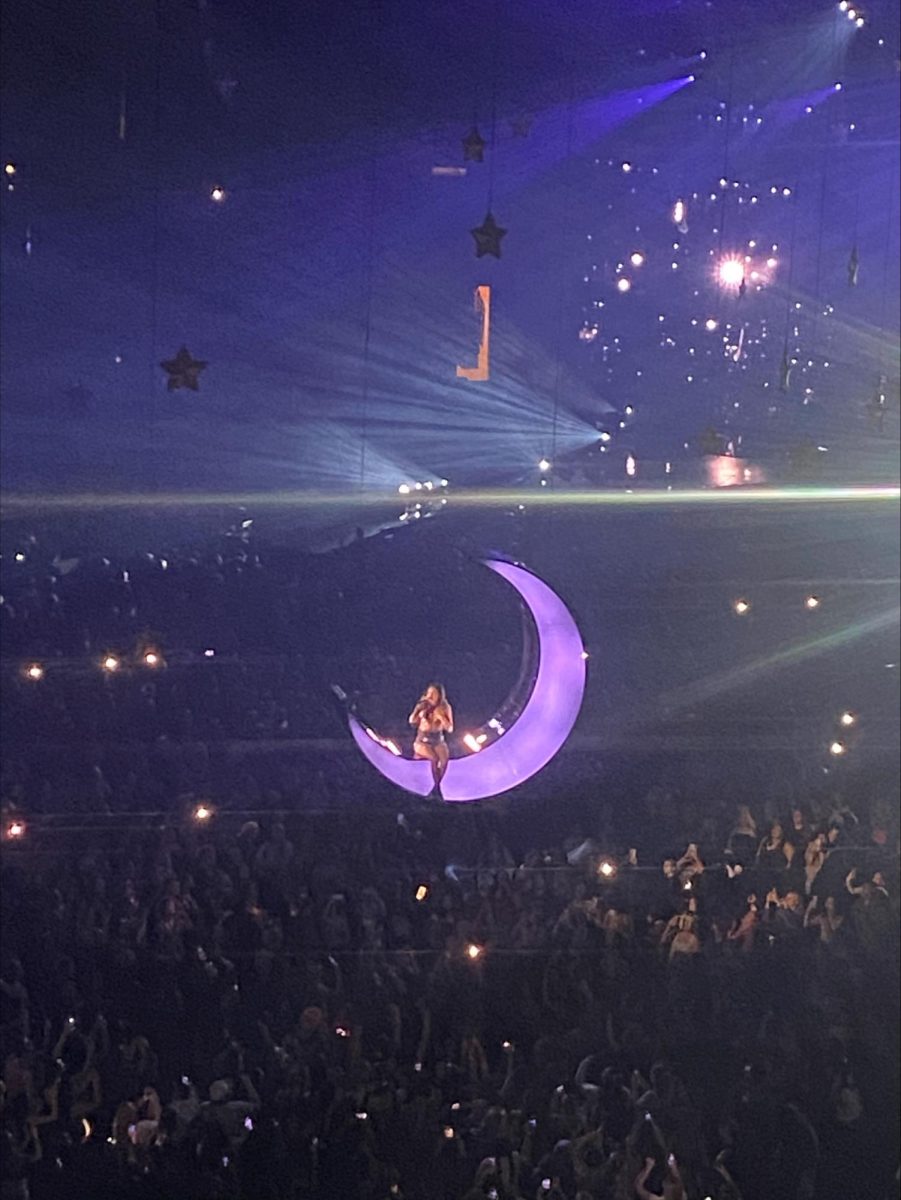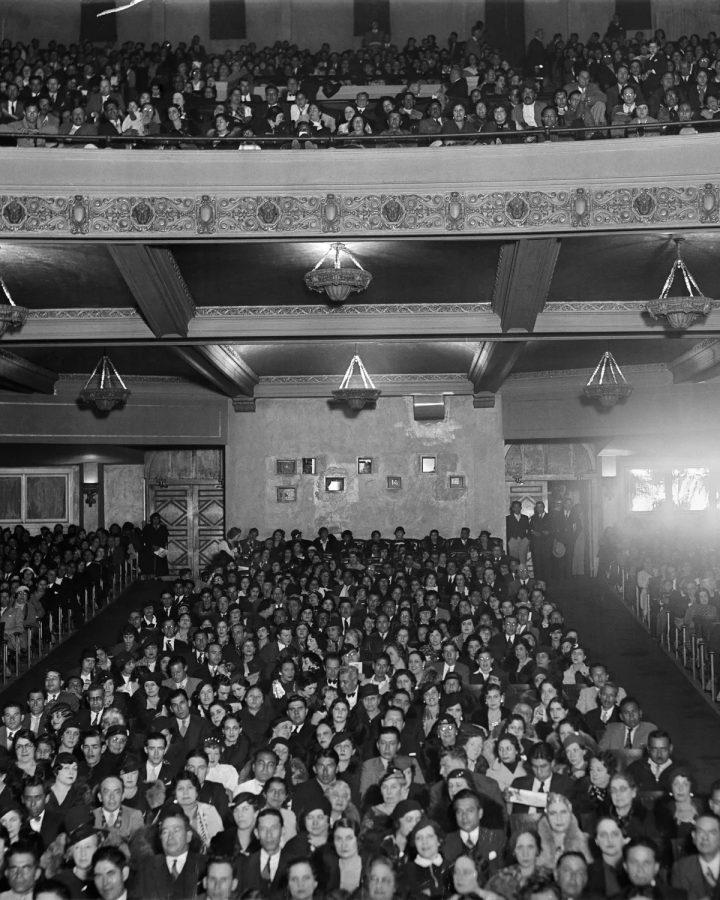Why you should still see movies in theaters
I have never lost the sense of awe that the sheer resilience of movie theaters inspires in me. Over the past century, the cinematic experience has survived two pandemics, the rise of cable television and the widespread adoption of streaming media. Simultaneously, it is evident that these events, while woefully unsuccessful in driving theaters out of business, have dealt them serious blows. In 1930, 65% of Americans went to theaters at least once per week. In 2021, 61% of Americans did not go to theaters at all. As with most social and demographic phenomena to occur in the last two years, the COVID-19 pandemic greatly exacerbated this decline in theater attendance, but it is far from the sole arbiter of this trend.
The single greatest factor at play here is the aforementioned proliferation of online streaming, allowing people to view newly released films on televisions, laptops and phones, bringing an entire new kind of convenience to film viewing. Additionally, the window of time in which films are being shown exclusively in theaters has been significantly shortened by film studios, allowing theatrical releases to be viewed on streaming services earlier than previously was the case. However, a convenient film viewing experience should not be mistaken for a qualitative one. As one of the few Americans that still attends movie theaters every week to see new films, I am a enthusiastic proponent of theatrical experience who recommends that others see movies in theaters whenever they have the opportunity to.
Film is fundamentally different than other forms of human creative expression precisely because it is a visual art form. One of the most pervasive issues that arises with home viewing of films is how mobile devices distort and undermine the sanctity of their imagery. Filmmakers spend years honing their craft and manipulating the light and color of the images of their films to create the intended effect and evoke certain emotions in the audience. The beauty of cinema lies in the specificity of the image and how the finer details create a visual experience, elements that are entirely lost when you watch it on a mobile device with a screen that is reflecting light from other sources in the room you are in or worse, one with cracks traversing the screen. There is no standardization of the resolution, color contrasts and brightness between different home devices either.
For instance, a major grievance I have against Apple is the manner in which the digital video processing software on their phones distorts the original degree of color contrasts in the imagery of films, which is why I can no longer stomach watching movies on Apple devices. And to reiterate, if you are watching a film in a room with any other light sources, the reflections will contort the brightness of the original image. Most viewers will assuredly be able to understand what is occurring within the frame, but the nuances and subtleties imbedded in the filmmakers’ vision are often lost. Meanwhile, movie theaters utilize cinema projectors for their showings that conforms to DCI standards of high technical proficiency, reliability, and quality. And since the screen is the only light source in a theater, the intended brightness is similarly maintained. This ensures that movie theaters around the world all conform to the filmmakers’ vision, displaying the image with the same color contrasts and resolution whether the movie theater is in Omaha or New York or Shanghai.
In addition to being an visual medium, film also prominently incorporates sound. This is another arena in which theaters offer you a far superior experience than home viewing does. Mobile devices normally have a single speaker that sends sound waves in a particular director, while cinemas make use of dynamic surround sound systems that place the viewer in the center of the action of the film, which far outweighs any auditory experience available to you at home on speakers or through headphones. Like projection, sound systems at theaters are subject to high standards that ensure that the highest quality audio is available all around the world. The global industry standard is Dolby Digital, which mixes audio through multiple channels routes to different speakers located throughout the cinema, enveloping the audience in a 360 degree auditory experience.
One of the aspects of film viewing that I believe is most valuable is the communal experience of watching films. For decades, movie theaters have served as a destination for people going on everything from a romantic dates to family outings. Cinemas allow audiences to view films simultaneously, which is unique amoung art forms. There is a sense of camaraderie that is built through sharing the emotional reactions invoked by seeing a film with others in the same theater even though you know almost nothing about them. Furthermore, in this digital age in which our attention spans have been ravaged by social media algorithms and the fragmented viewing is encouraged by streaming services, theaters force you to watch a movie as an uninterrupted, cohesive experience.
Most of all, I think that there is something fundamentally awe-inspiring about seeing a film projected onto a massive screen. Call me a simpleton of simple tastes, but a film on a screen of the size offered at movie theaters commands my attention in away that no phone or television ever could. The quality and scale of the viewing experience itself compels you to take the movie seriously. The format itself gives credence to film as an art form and honors all of the effort that went into the creation of the film, and the communal experience of attending one with a crowd of people will heighten a film’s potential for intellectual poignancy and emotional significance. So, please, start watching more movies in theaters. I promise you will enjoy films so much more.
Your donation will support the student journalists of Omaha Central High School. Your contribution will allow us to purchase equipment and cover our annual website hosting costs.

Hello Register readers! I am Jane McGill, and this is my third and final year at The Register. I served as Executive Editor, editing The Register’s...























